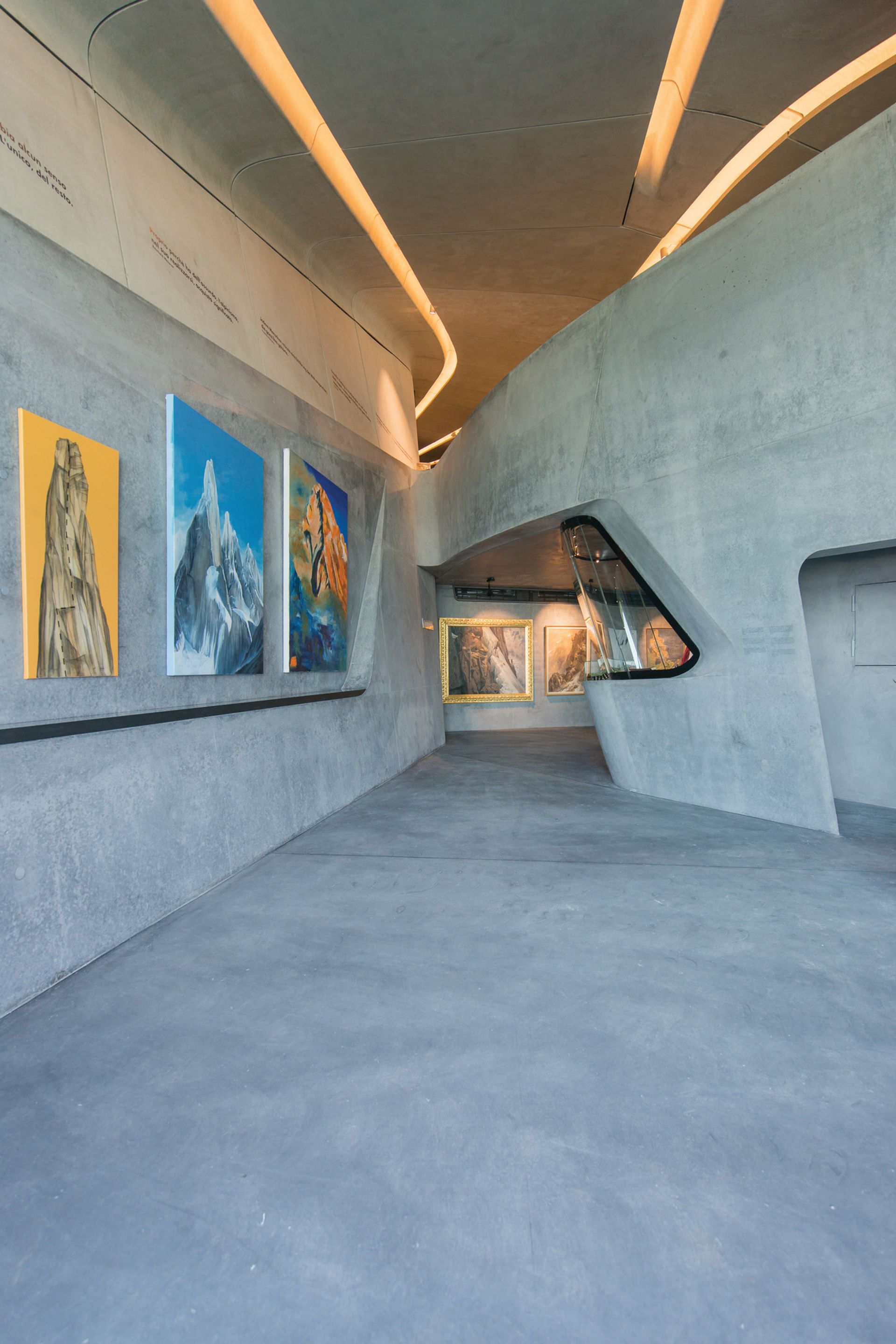The signature curves of the new mountaintop museum designed by Zaha Hadid Architects are partially hidden, buried within the peak of Mount Kronplatz in the Italian Alps. The concrete structure, which opened to the public in July, is the sixth and final museum created by the explorer Reinhold Messner, the first person to climb Everest alone and without extra oxygen. Each institution is dedicated to a different aspect of mountain culture, from ice climbing to mythology. The latest addition, Messner Mountain Museum Corones, presents a theme close to Messner’s heart—traditional alpinism, or what he describes as “the 250-year-old contest between man and the mountain”—through objects and works of art.
At 2,300 metres above sea level, the project grew out of an idea for a panoramic viewing platform to attract tourists to the mountain outside the ski season. Zaha Hadid Architects won the design competition organised by Skirama Kronplatz, a consortium of ski facility operators, in 2011. The brief changed when Messner approached the group with a proposal for a museum embedded into the summit, but the panorama remains an integral feature. Three large viewing windows face three famous peaks in the surrounding area. The consortium expects around 50,000 people to hike or take the cable car to the museum in its first year.

Messner, who began his climbing career at a nearby mountain, had the idea to “go underground to reduce the impact we were going to have on the Alpine landscape”, says the architect Peter Irmscher. The museum’s small footprint—1,000 sq. m in total, including 600 sq. m of flexible gallery space—belies the effort required to build into a mountain. Around 4,000 cubic metres of earth had to be shifted. Construction could only happen in the summer months, when the skiers departed and snow could be cleared from the single access route. “Bringing a 44-tonne cement mixer up a 15km-long mule track is not easy,” says Andrea Del Frari, the director of Skirama Kronplatz. The Skirama consortium fully funded the €3m project.

